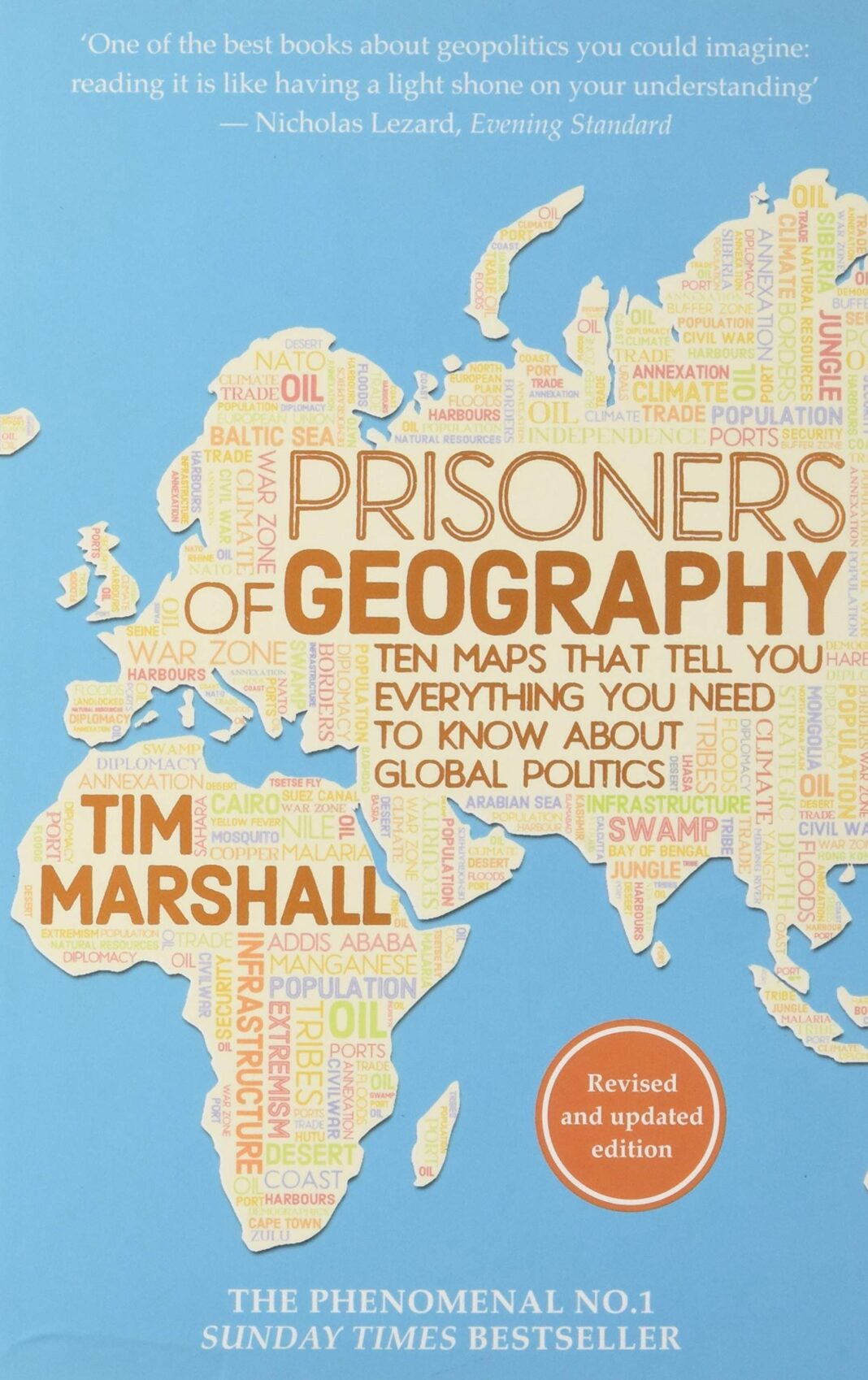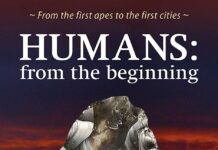Take, for example, China and India: two massive countries with huge populations that share a very long border but are not politically or culturally aligned. It wouldn’t be surprising if these two giants had fought each other in several wars, but in fact, apart from one month-long battle in 1962, they never have. Why? Because between them is the highest mountain range in the world, and it is practically impossible to advance large military columns through or over the Himalayas. As technology becomes more sophisticated, of course, ways are emerging of overcoming this obstacle, but the physical barrier remains a deterrent, and so both countries focus their foreign policy on other regions while keeping a wary eye on each other.
==========
The conflict in Iraq and Syria is rooted in colonial powers ignoring the rules of geography, whereas the Chinese occupation of Tibet is rooted in obeying them; America’s global foreign policy is dictated by them, and even the technological genius and power projection of the last superpower standing can only mitigate the rules
==========
The conflict in Iraq and Syria is rooted in colonial powers ignoring the rules of geography, whereas the Chinese occupation of Tibet is rooted in obeying them; America’s global foreign policy is dictated by them, and even the technological genius and power projection of the last superpower standing can only mitigate the rules that nature, or God, handed down.
==========
Whatever its European credentials, Russia is not an Asian power for many reasons. Although 75 per cent of its territory is in Asia, only 22 per cent of its population lives there. Siberia may be Russia’s ‘treasure chest’, containing the majority of the mineral wealth, oil, and gas, but it is a harsh land, freezing for months on end, with vast forests (taiga), poor soil for farming and large stretches of swampland. Only two railway networks run west to east – the Trans-Siberian and the Baikal–Amur Mainline. There are few transport routes leading north to south and so no easy way for Russia to project power southward into modern Mongolia or China: it lacks the manpower and supply lines to do so.
==========
‘China is a civilisation pretending to be a nation.’
Lucian Pye, political scientist
==========
Once, the majority of the population of Manchuria, Inner Mongolia and Xinjiang were ethnically Manchurian, Mongolian and Uighur; now all three are majority Han Chinese, or approaching
==========
Once, the majority of the population of Manchuria, Inner Mongolia and Xinjiang were ethnically Manchurian, Mongolian and Uighur; now all three are majority Han Chinese, or approaching the majority. So it will be with Tibet.
==========
At the stroke of a pen, and the handing over of $15 million, the Louisiana Purchase of 1803 doubled the size of the USA and gave it mastery over the greatest inland water transport route in the world. As the American historian Henry Adams wrote, ‘Never did the United States get so much for so little.’ The greater Mississippi basin has more miles of navigable river than the rest of the world put together.
==========
The Homestead Act of 1862 awarded 160 acres of federally owned land to anyone who farmed it for five years and paid a small fee. If you were a poor man from Germany, Scandinavia, or Italy, why go to Latin America and be a serf, when you could go to the USA and be a free land-owning man?
==========
Most subsequent presidents bore in mind George Washington’s advice in his farewell address in 1796 not to get involved in ‘inveterate antipathies against particular nations, and passionate attachments for others’, and to ‘steer clear of permanent alliances with any portion of the foreign world’.
==========
For thirty years it has been fashionable to predict the imminent or ongoing decline of the USA. This is as wrong now as it was in the past. The planet’s most successful country is about to become self-sufficient in energy, it remains the pre-eminent economic power and it spends more on research and development for its military than the overall military budget of all the other NATO countries combined. Its population is not ageing as in Europe and Japan, and a 2013 Gallup study showed that 25 per cent of all people hoping to emigrate put the USA as their first choice of destination. In the same year Shanghai University listed what its experts judged the top twenty universities of the world: seventeen were in the USA.
==========
The Prussian statesman Otto von Bismarck, in a double- edged remark, said more than a century ago that ‘God takes special care of drunks, children and the United States of America.’ It appears still to be true.
==========
What is now the EU was set up so that France and Germany could hug each other so tightly in a loving embrace that neither would be able to get an arm free with which to punch the other. It has worked brilliantly and created a huge geographical space now encompassing the biggest economy in the world.
==========
Its location still grants it certain strategic advantages, one of which is the GIUK (Greenland, Iceland and the UK) gap. This is a choke point in the world’s sea lanes – it is hardly as important as the Strait of Hormuz or the Strait of Malacca, but it has traditionally given the UK an advantage in the North Atlantic.
==========
The GIUK is one of many reasons why London flew into a panic in 2014 when, briefly, the vote on Scottish independence looked as if might result in a Yes. The loss of power in the North Sea and North Atlantic would have been a strategic blow and a massive dent to the prestige of whatever was left of the UK.
==========
Take, for example, Libya, an artificial construct only a few decades old which at the first test fell apart into its previous incarnation as three distinct geographical regions. In the west it was, in Greek times, Tripolitania (from the Greek tri polis, three cities, which eventually merged and became Tripoli). The area to the east, centred on the city of Benghazi but stretching down to the Chad border, was known in both Greek and Roman times as Cyrenaica. Below these two, in what is now the far south-west of the country, is the region of Fezzan. Tripolitania was always orientated north and north-west, trading with its southern European neighbours. Cyrenaica always looked east to Egypt and the Arab lands. Even the sea current off the coast of the Benghazi region takes boats naturally eastwards. Fezzan was traditionally a land of nomads who had little in common with the two coastal communities. This is how the Greeks, Romans and Turks all ruled the area – it is how the people had thought of themselves for centuries. The mere decades-old European idea of Libya will struggle to survive and already one of the many Islamist groups in the east has declared an ‘emirate of Cyrenaica’. While this may not come to pass, it is an example of how the concept of the region originated merely in lines drawn on maps by foreigners.
==========
The DRC is an illustration of why the catch-all term ‘developing world’ is far too broad-brush a way to describe countries which are not part of the modern industrialised world. The DRC is not developing, nor does it show any signs of so doing. The DRC should never have been put together; it has fallen apart and is the most under-reported war zone in the world, despite the fact that six million people have died there during wars which have been fought since the late 1990s.
==========
This was not quite what President Obama had in mind when, during his Africa tour in July 2015, he criticised African leaders, saying, ‘The continent will not advance if its leaders refuse to step down when their terms end . . . Sometimes you will hear leaders say, “I’m the only person who can hold this nation together.” If that’s true then that leader has truly failed to build their nation.’
==========
Groups such as Al Qaeda and, more recently, Islamic State have garnered what support they have partially because of the humiliation caused by colonialism and then the failure of pan-Arab nationalism – and to an extent the Arab nation state. Arab leaders have failed to deliver prosperity or freedom, and the siren call of Islamism, which promises to solve all problems, has proved attractive to many in a region marked by a toxic mix of piety, unemployment and repression. The Islamists hark back to a golden age when Islam ruled an empire and was at the cutting edge of technology, art, medicine and government.
==========
The battle for the future of the Arab Middle East has to an extent taken the spotlight off the Israeli–Arab struggle. The fixation with Israel/Palestine does sometimes return, but the magnitude of what is going on elsewhere has finally enabled at least some observers to understand that the problems of the region are not down to the existence of Israel.
==========
The Arab countries are beset by prejudices, indeed hatreds of which the average Westerner knows so little that they tend not to believe them even if they are laid out in print before their eyes. We are aware of our own prejudices, which are legion, but often seem to turn a blind eye to those in the Middle East. The routine expression of hatred for others is so common in the Arab world that it barely draws comment other than from the region’s often Western-educated liberal minority who have limited access to the platform of mass media. Anti-Semitic cartoons which echo the Nazi Der Stürmer propaganda newspaper are common. Week in, week out, shock-jock imams are given space on prime-time TV shows. Western apologists for this sort of behaviour are sometimes hamstrung by a fear of being described as one of Edward Said’s ‘Orientalists’. They betray their own liberal values by denying their universality. Others, in their naivety, say that these incitements to murder are not widespread and must be seen in the context of the Arabic language, which can be given to flights of rhetoric. This signals their lack of understanding of the ‘Arab street’, the role of the mainstream Arab media and a refusal to understand that when people who are full of hatred say something, they mean it.
==========
An oft-quoted remark by a Pakistani officer that Pakistan would make India bleed by a thousand cuts was addressed in late 2014 by military analyst Dr Amarjit Singh writing in the Indian Defence Review: ‘Whatever others may believe, my opinion is simply that it is better for India to brave a costly nuclear attack by Pakistan, and get it over with even at the cost of tens of millions of deaths, than suffer ignominy and pain day in and day out through a thousand cuts and wasted energy in unrealized potential.’ That may not reflect official government policy, but it is an indication of the depth of feeling at many levels in both societies.
==========
Taliban had nowhere to go – they were Afghans and Pakistanis – and, as they told these new technologically advanced foreign invaders from America and Europe, ‘You may have the watches – but we have the time.’
==========
LATIN AMERICA, PARTICULARLY ITS SOUTH, IS PROOF that you can bring the Old World’s knowledge and technology to the new, but if geography is against you, then you will have limited success, especially if you get the politics wrong. Just as the geography of the USA helped it become a great power, so that of the twenty countries to the south ensures that none will rise to seriously challenge the North American giant this century nor come together to do so collectively.




